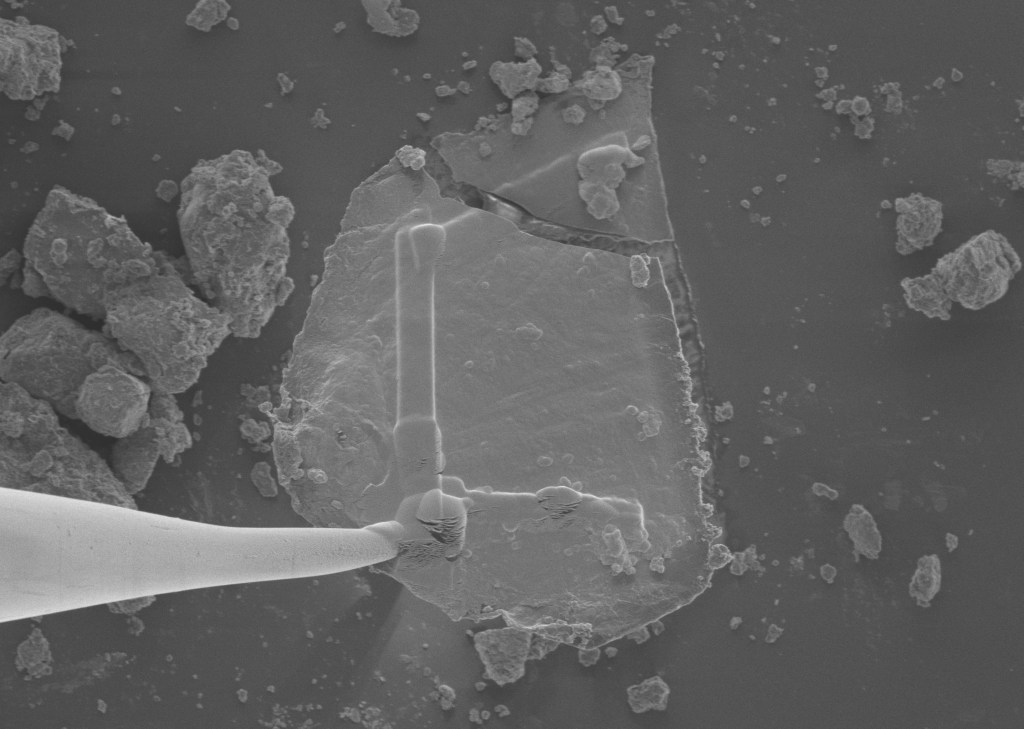Saturn’s North Pole Hexagon and Aurora
| PIA Number | PIA09185 |
|---|---|
| Language |
|
This nighttime view of Saturn's north pole by the visual and infrared mapping spectrometer on NASA's Cassini orbiter reveals a dynamic, active planet at least 75 kilometers (47 miles) below the normal cloud tops seen in visible light. Clearly revealed is the bizarre six-sided hexagon feature present at the north pole.
This image is one of the first clear images of the north polar region ever acquired from a unique polar perspective. In this image, the blue color shows high-altitude emissions from atmospheric molecules excited by charged particles smashing into the atmosphere along Saturn's powerful magnetic field lines, producing the aurora at very high altitudes in Saturn's atmosphere. The red color indicates the amount of 5-micron wavelength radiation, or heat, generated in the depths of the warm interior of Saturn that escapes the planet. Clouds blocking this light are revealed as silhouettes against the background thermal glow of the planet.
This image is among the first to capture the entire hexagonal feature and north polar region in one shot. It is also one of the first polar views using Saturn's thermal glow at 5 microns (seven times the wavelength visible to the human eye) as the light source. This allows polar cloud features to be revealed during the persistent nighttime conditions under way during north polar winter.
The hexagonal feature was originally discovered by NASA's Voyager spacecraft in 1980, but those images and subsequent ground-based telescope images suffered from poor viewing perspectives, which placed the feature and the north pole at the extreme northern limb (edge) in those images.
The strong brightness of the hexagon feature indicates that it is primarily a clearing in the clouds, which extends deep into the atmosphere, at least down to the 3-bar (3-Earth atmospheres pressure) level, about 75 kilometers (47 miles) below the clouds and hazes seen in visible wavelengths. Thick clouds border both sides of the narrow feature, as indicated by the adjacent dark lanes paralleling the bright hexagon. This image and other images acquired over a 12-day period between Oct. 30 and Nov. 11, 2006, show that the feature is nearly stationary, and likely is an unusually strong pole-encircling planetary wave that extends deep into the atmosphere.
This image was acquired by the Cassini visual and infrared mapping spectrometer on Oct. 29, 2006, from an average distance of 905,000 kilometers (562,340 miles) above the clouds.
The Cassini-Huygens mission is a cooperative project of NASA, the European Space Agency and the Italian Space Agency. The Jet Propulsion Laboratory, a division of the California Institute of Technology in Pasadena, manages the mission for NASA's Science Mission Directorate, Washington, D.C. The Cassini orbiter was designed, developed and assembled at JPL. The Visual and Infrared Mapping Spectrometer team is based at the University of Arizona, where this image was produced.
For more information about the Cassini-Huygens mission visit http://saturn.jpl.nasa.gov/home/index.cfm. The visual and infrared mapping spectrometer team homepage is at http://wwwvims.lpl.arizona.edu.
Credit: NASA/JPL/University of Arizona

























